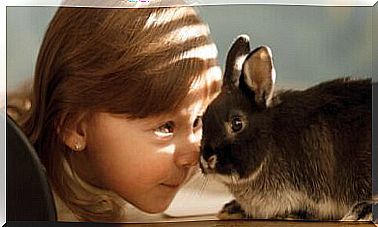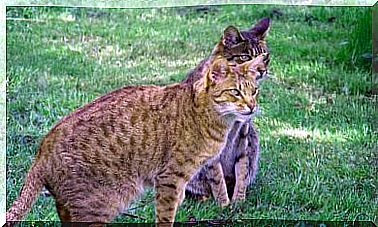The Russian Blue Cat
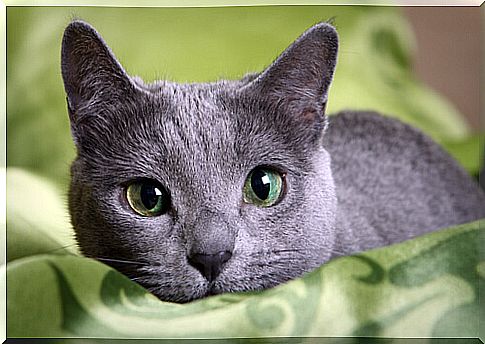
Of the most famous and admired pets in much of the world, the Russian blue cat falls in love. It is due both to her incredible physical beauty, and her charming personality.
The origins of the Russian blue cat
Originally from the Archangel Islands, north of Russia (which is why he is also known as the Archangel Cat or Blue Archangel), his origins are not entirely clear. Unanimously, specialists and researchers in the field consider that it is one of the oldest natural breeds that is known.
In the absence of documentation, much of what is said about this domesticated feline belongs, to a large extent, to the field of fantasy. In any case, there are no means to prove it.
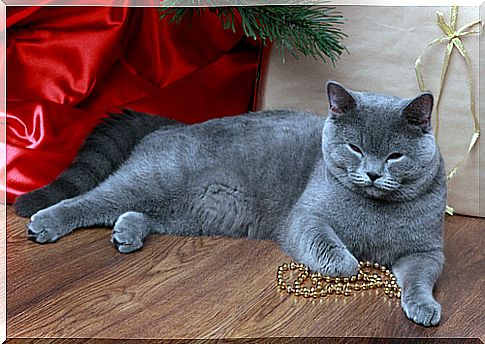
Some argue that it is descended from the cats that served as companions for the ancient Russian tsars. Others claim that, for a time, they were hunted indiscriminately, in order to use their striking, silky fur to adorn the sleeves and collars of jackets.
The only thing that is absolutely certain is that he left Russia for the first time in the 1860s, on merchant ships that took him to England, where he was quickly adopted by the aristocracy. In this way it would become one of the most reputable specimens in cat beauty contests.
General characteristics
The Russian blue cat differs from the rest of the breeds by its unique coat. It is bluish-gray in color, with slightly silver reflections; short, thin and slightly close to the body.
Although not very common, there are also some specimens with slightly longer hair. It has a double layer, which gives it a special texture, very pleasant to the touch when caressing it.
Another distinctive point is its large green eyes with an almond shape. His face has perfectly balanced features. It is an ideal size, with a short snout and prominent whiskers. Their mouth is raised slightly at the corners, allowing them to always wear a smile. The ears are long and with pointed ends.
It is a medium-sized cat. Males weigh between 3.5 and 5 kg, while females range from 2.5 to 4 kg.
The conformation of its skeleton is structured with fine bones, but robust and strong.
The Russian blue cat as a pet
The sweet, kind, and caring personality, as well as a high level of intelligence, are other reasons for its immense popularity. If the owners of these “creatures” greatly enjoy stroking their hair, they let themselves be done with all pleasure.
They are playful. In addition, they share their spaces with children, with other domestic cats and even with dogs without major inconvenience. Like most felines that lead a family life, they tend to be shy and reserved in the presence of strangers.
They quickly learn the rules of coexistence. They are extremely expressive, devoted and loyal to their family group.
Another characteristic in the personality of these kittens is that, although they enjoy the constant company of their humans, they can spend long moments of solitude without surprises.
There are two things that the blue cat does not tolerate: changes in routine and poor hygiene.
These felines have closed habits. They need to always eat at the same time, as well as explore their home and surroundings. Any variation to their daily schedule alters them, generates anguish and a bad mood. But the changes that they hardly tolerate are the moves, so this breed is not suitable for changes. This is the case of people who, due to their work responsibilities, must constantly move from one place to another.
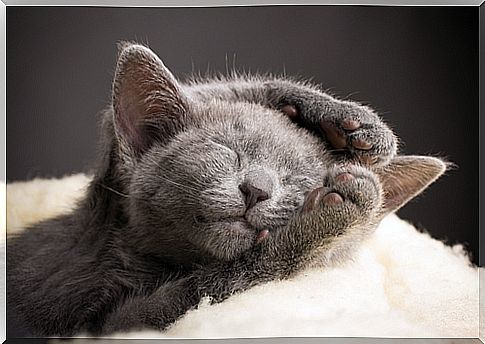
When it comes to grooming and hygiene, they are finicky like no other breed about cleaning their litter box. They will ask their owners for daily changes. Otherwise, and as a protest, they will begin to urinate and leave their excrement next to the litter box.
Health and care
Due to its “natural” character (not born from any cross), the blue cat is one of the healthiest breeds that exists. There is no known genetic problem or propensity for disease development.
In fact, their life expectancy is, comparatively speaking, quite high, crossing the barrier of 15 years without major difficulties.
Similarly, compared to other breeds of domestic cats, it sheds little hair, so it does not require any specific care. Those who want to keep their furniture 100% hair-free will only need to brush it once a week.

